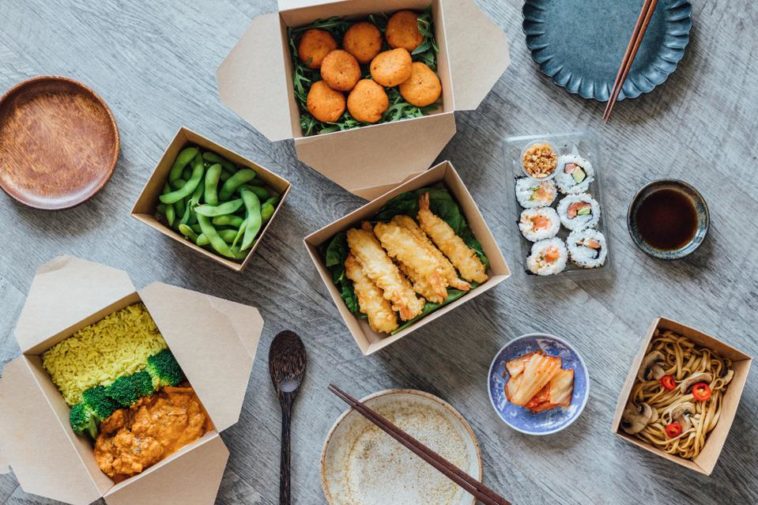Food Insecurity During The Pandemic: How One Innovative Seattle Food Bank Pivoted – Forbes
- Share to Facebook
- Share to Twitter
- Share to Linkedin
The economic devastation wrought by COVID-19 has been a gut punch for millions, which include many formerly employed by the struggling restaurant industry.

Food is prepared for delivery to homes of people in need at the University District Food Bank in … [+]
Joshua Trujillo
The nation’s food pantries have in turn been dramatically impacted. For the extensive network of community organizations established over the years to help address the gnawing issue of food insecurity, it’s been a challenge to respond to the growing demand as resources are squeezed.
Yet for one neighborhood food bank in Seattle, there’s a definite bright side during these dark days. Here’s how the University District Food Bank deftly adjusted during the pandemic.
In the beginning
The University District Food Bank got its humble start in 1983 in the basement of a church, with a small, scrappy leadership team. The current team worked diligently for years to gathered enough to financial support to move the operation in 2016 into a much larger facility. The 2,200 square foot space is located on the ground floor of affordable housing apartments and next door to a job skills training coffee shop called Street Bean. The move allowed the food bank to expand on its original, groundbreaking approach.
Instead of handing out random bags of food, this tiny operation pioneered the practice of inviting its customers into a supermarket-like setting. That way customers could shop for ingredients that made sense for their needs. Support from neighborhood grocery stores, restaurants and the Saturday farmers market helped ensure the shelves were well-stocked.
Its success led to broader initiatives including a program that involves sending low-income students home with food for the weekend. Executive director Joe Gruber explains:
“Packs for Kids began for us in 2009 with a few students at a nearby middle school. It has grown to reach students at 14 schools from kindergarten though 12th grade. Pre-COVID we were supporting about 550 to 600 students per week. Now we are still supporting 600-plus students per week in virtual learning.” He added that this effort wouldn’t be possible without committed volunteers at the participating schools.
24 Chefs Share What They’re Cooking This (Socially Distanced) Christmas
The Outlook For California Restaurants
Professional Chefs Share Their Favorite Holiday Dessert Recipes
Volunteers are essential in executing the pandemic pivot that’s been put into place since the spring when Seattle was one of the first cities in the nation to be hard hit by the virus.

The University District Food Bank in Seattle has shifted to a personal shopping model during the … [+]
Joshua Trujillo

Private First Class Josh Valerio and Private First Class Roty Kpa, members of the Washington … [+]
Joshua Trujillo

Volunteer Peg Curtin prepares food for delivery to homes of people in need at the University … [+]
Joshua Trujillo
Pandemic pivot
Since the health care crisis began unfolding last spring, millions of Americans are now unemployed, struggling to pay bills and buy groceries. This fall, it was widely reported that more than 8 million people had slipped into poverty. By year’s end, the U.S. will see the biggest increase in poverty since the 1960s, according to government reports.
Organizations like the University District Food Bank suddenly faced new challenges. There was concern that the annual fall auction, its primary fundraiser, would be negatively impacted. In previous years, Seattle restaurants, food purveyors, breweries and wineries across the state had generously donated to the event.
Yet, as many of those businesses scrambled to stay afloat, many still maintained their commitment to contribute. The virtual event — complete with a meal from stalwart partner Cameron Catering — was a hit. More than $240,000 was raised.
Tom Douglas, the city’s most successful restaurateur, was among those who continued the tradition of donating: “Emergency food distribution is part of the fabric of our neighborhoods and represents the civility of our society. We are proud to be part of that network and now that many of our former employees rely on services provided by places like the University District Food Bank, we have redoubled our efforts to be part of a much-needed hunger solution.”
Among the many adjustments made by this organization, none has been more impactful than the expansion of its home delivery option. Weekly numbers have doubled since the pandemic began, with up to 500 orders delivered each week.
“Home delivery is open to folks who cannot access the food bank because of age, frailty, disability, illness, or another condition,” said Gruber. “During the COVID-19 crisis, we expanded to include folks who are at increased risk because of their health, a family member’s health or because they work in a high risk environment.”
Meanwhile, the protocol for in-person shopping has changed. Customers now fill out a list and turn it in so volunteers can fill each order with social distancing protocol in place. Somewhat surprisingly, this development has led to an increase in requests for fresh fruit and vegetables, Gruber said.

Volunteers Nancy Howard and Martin Chew load their pickup with food for delivery to homes of people … [+]
Joshua Trujillo

Requests have doubled for home deliveries from the University District Food Bank in Seattle.
Joshua Trujillo
Stepping up to help
While some volunteers had to opt out due to the pandemic, the University District Food Bank was fortunate that others have stepped up to help. More than 250 volunteers are now helping in the operation.
“We benefit from being in a healthy community where so many are working at home, their jobs haven’t been impacted,” said Gruber in a recent phone interview. “There’s an elevated awareness and understanding of the importance of support from small businesses and community members.”
The increased demand and continued support from the community also means the food bank has hired a few more part-time workers, including at least one who used to work in the restaurant industry as a bartender.
“There are probably a lot more folks from the restaurant community coming in for the first time, but we use a light touch when interacting with our customers. We don’t ask a lot of questions,” Gruber explained.
As far as the future goes, the outlook remains uncertain. What’s a given, though, is that when spring arrives, the rooftop garden that helps feed the food bank community will be planted once again. Last year’s star crops were the 300 tomato plants, as well as abundant harvests of radishes and fresh herbs.
Watch this video by Greg Westhoff of Tideway Creative to see how one food bank in Seattle has adjusted to the challenges posed by the pandemic:
Published at Thu, 24 Dec 2020 14:23:51 +0000





Comments
Loading…